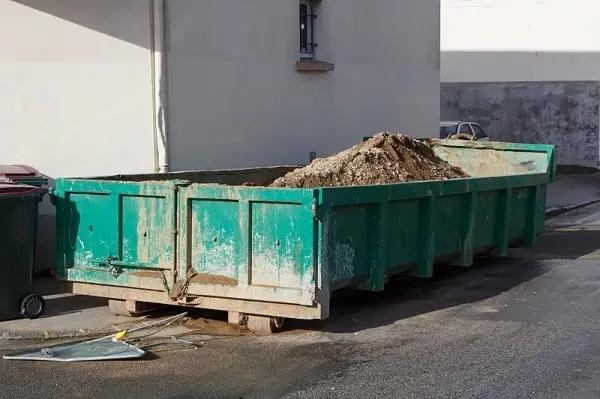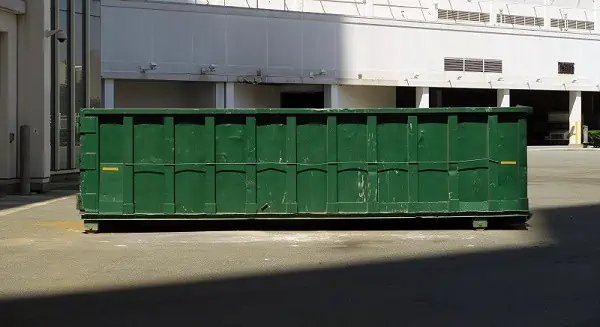There are some small things you can add to your current routine that will make a huge impact on the environment.
Replacing some of your current everyday products with more sustainable options can be a great way to go green, and it can be incredibly easy to do so.
Tennent, New Jersey’s preferred waste management services provider continues to be Eagle Dumpster Rental.
12 Eco-Friendly Products For Any Home
Here are 12 of the best eco-friendly products to replace what you currently use:
- BogoBrush’s Recyclable, Biodegradable Toothbrushes
It is possible to change your impact on the environment through oral hygiene.
The recyclable toothbrush is made from recycled #5 plastic and can be thrown into your curbside recycling trash when you are finished with it. The biodegradable option is made from bioplastic, which means it can be thrown into your compost pile once it has been used.
- River Soap’s All Natural Bars
River Soap makes 100% natural, cruelty-free and biodegradable bars of soap that can help keep your body and the environment clean.
Each bar of soap is made using a palm and coconut base with essential oils for fragrance. Spices and botanicals are added for color, giving customers various options, including a majority of vegan options except for the Milk and Honey bars.
- Uncommon Coffee Roaster’s Compostable Pods
Becoming more sustainable does not mean you have to give up on your little luxuries, including home-brewed coffee. This is because these are the first 100% compostable pods on the market.
These coffee pods are made using plant-based materials, which will completely biodegrade within 90 days, and you can be thrown into your compost pile. The packaging is also 100% recyclable.
- High Sierra’s Low-Flow Showerheads
Our daily showers use an incredible amount of water, but that does not mean you have to give them up to become more eco-friendly. These low-flow showerheads rely on innovative technology, which means they use 40% less water than even other low-flow showerheads.
Another great benefit of these showerheads is the fact they come with fewer clogging problems than others on the market.
- Shea Moisture’s Incredibly Green Hair Products
This line of green hair products from Shea Moisture actively keeps our water supplies clean as they do not use petroleum, parabens, and other harmful chemicals in any of their products.
Instead, this line of hair care products relies on all-natural, organic ingredients that have been sustainably produced. All of their products are fairly traded and cruelty-free.
- EcoVibe Apparel’s Earth-Friendly Fashion
With EcoVibe’s clothing line, you can remain fashionably dressed without damaging the environment. This brand creates every piece of clothing as sustainably as possible.
For example, this brand relies on modal, which is a material that has been made from beech pulp. This can be extracted without cutting down trees, making it incredibly sustainable. As well as being sustainable, this material is also CO2-neutral, stain-resistant, and extremely durable.
- Green Forest Paper’s Recycled Toilet Paper
The bathroom can be an incredibly wasteful place in more ways than one. Green Forest Paper wants to change this as much as they can, which is why their recycled toilet paper is made from recycled paper, including their tissues and cardboard rolls.
All components are 100% recycled and have not been treated with toxic bleach, which is normally used for whitening. Recycled paper also has shorter fibers which means it breaks down faster in septic systems.
- Bee’s Wrap’s Reusable Plastic Wrap
Bee’s Wrap is a Vermont-based business that creates reusable food wraps. Instead of relying on the plastic wrap you usually have in the kitchen, which will only end up in landfills, you can replace it with this reusable wrap which is made from a mixture of beeswax, tree resin, and organic jojoba oil.
The heat from your hands allows you to mold the wrap to any desired shape to cover food. Once you have used it to wrap, rinse it in cool water and clean it with dish soap so it can be used again and again.
- Full Circle’s Kitchen Compost Bins
With these compost bins, it will be easier to collect food waste and prevent it from going into landfills. Collect food waste and add it to your compost pile with these handy storage bins.
- Go Green’s No-Packaging-Needed Lunch Box
If you are worried about the amount of packaging that goes into your kid’s school lunches or your work lunch, then this product is a must-have.
Each lunchbox contains several compartments which can be used to separate and store food without the need for additional packaging. You can buy packs from this branch which contain a fun carrying case, ice pack, and reusable water bottle.
- Klean Kanteen’s Reusable Bottles
Klean Kanteen created the original steel water bottle in 2004 and has not looked back since.
This brand now has containers for all kinds of liquid and should be a go-to brand for those who want to be more sustainable in their daily routines.
- Lunchskin’s Reusable Sandwich Bags
Whether you are packing lunches for the family every day or are wanting to take snacks on the go, these reusable sandwich bags can be incredibly useful.
Not only do they prevent the use of plastic sandwich bags, but they can also help you save money over time as they are reusable. They come in various designs and are made to meet FDA’s standards for food safety.
© Copyright 2024. All Right Reserved.

